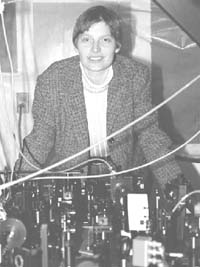Speed limit
Speed limit

one of the most startling things about Einstein's theory of relativity was the fact that it postulated that the speed of light in a vacuum was constant and had a fixed value. This value is enormous when compared to ordinary speeds: 300,000 kilometres per second.
But now, researchers at Harvard University have achieved the stupendous feat of slowing down the speed of light to a pedestrian 17 metres per second. This could play an extremely important role in the optoelectronic industry. With an increasing number of applications for optical electronics (like optical switches with enormous speeds, or even optical computers) the experiment could well herald a new technological revolution.
Of course, it is well known that the speed of light in materials is much slower than in a vacuum, leading to the phenomenon of refraction. The higher the index of refraction of a material, the slower the speed of light in the medium. Ordinarily, one cannot increase the index of refraction significantly. The reason: as a material gets denser, it absorbs most of the light, leading to energy losses. The trick that L V Hau and her collaborators have employed is to use a Bose-Einstein condensate instead of ordinary material to slow down light ( Nature , Vol 397, No 6719).
A Bose-Einstein condensate ( bec ) is a cloud of atoms that have been cooled to a temperature close to absolute zero (-273







